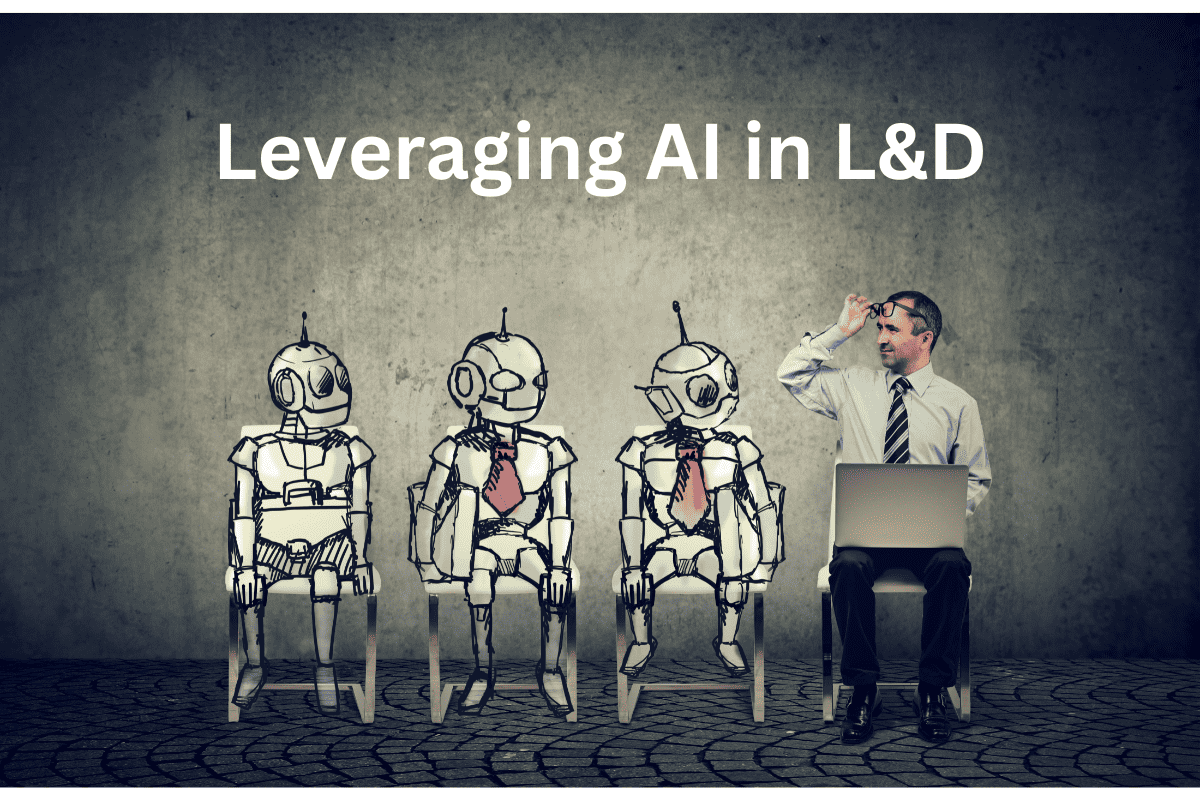Leveraging Artificial Intelligence in Learning and Development
I. Introduction
A. Brief history of AI in learning and development
As Artificial Intelligence (AI) has evolved since the mid-20th century, its applications in education and workforce training have become increasingly broad. Early AI research of the 1960s and 1970s established a cornerstone for early computer-assisted instruction systems like PLATO and TICCIT which offered unique learning experiences to students. Subsequent decades saw further advancements with intelligent tutoring systems (ITS), providing learners with tailored feedback and guidance during their studies. With such remarkable progress being made continually, there is no doubt that AI will continue to revolutionize modern teaching practices far into the future.
The advent of machine learning and deep learning techniques in the 21st century revolutionized AI’s role in learning and development. These advancements enabled the creation of sophisticated AI-powered learning platforms that could adapt to each learner’s needs and preferences, transforming the way we approach education and training. Today, AI has become an integral part of various learning environments, including K-12 education, higher education, and corporate training.
B. Importance of AI in modern education and workforce training
In the modern world, the pace of change and the demand for new skills are accelerating, making lifelong learning and continuous professional development essential. AI has emerged as a powerful tool to address these needs, offering several benefits that traditional learning methods often struggle to provide.
Personalization: AI can analyze vast amounts of data to tailor learning experiences to individual needs, helping learners acquire knowledge and skills more effectively.
Engagement: AI-powered learning platforms can use gamification, simulations, and interactive content to make learning more enjoyable and engaging.
Efficiency: AI can streamline the learning process by automating tasks like grading and providing real-time feedback, allowing educators to focus on higher-order tasks.
Data-driven insights: AI can track and analyze learner performance, providing valuable insights that can inform instructional design and decision-making.
Scalability: AI can deliver high-quality, consistent learning experiences to large numbers of learners, regardless of their location, making education more accessible and affordable.
As a result, AI has become indispensable in equipping individuals and organizations with the necessary skills and knowledge to thrive in a rapidly evolving world. The comprehensive guide that follows will provide an in-depth understanding of leveraging AI in learning and development, covering its various applications, benefits, best practices, and future trends.
II. Understanding Artificial Intelligence in Learning and Development
A. Definition of AI and its various forms
Artificial Intelligence (AI) refers to the development of computer systems that can perform tasks that typically require human intelligence, such as learning, reasoning, problem-solving, and understanding natural language. AI can be broadly classified into three categories:
Narrow AI: Also known as weak AI, these systems are designed to perform specific tasks without possessing general intelligence. Examples include AI-powered personal assistants, image recognition software, and spam filters.
General AI: This form of AI, also known as strong AI, aims to create machines that possess human-like intelligence, capable of understanding and applying knowledge across various domains.
Artificial Superintelligence: This hypothetical AI surpasses human intelligence, exhibiting cognitive abilities that far exceed human capabilities across multiple domains.
B. Overview of machine learning, deep learning, and natural language processing
Machine Learning: A subset of AI, machine learning involves developing algorithms that can learn from and make predictions based on data. These algorithms improve their performance as they are exposed to more data over time. Machine learning techniques are widely used in learning and development for tasks like pattern recognition, recommendation systems, and predictive analytics.
Deep Learning: Deep learning is a subfield of machine learning that employs artificial neural networks to model and solve complex problems. These networks are designed to mimic the human brain’s structure and function, enabling the machine to learn from large datasets. Deep learning has been instrumental in advancing natural language processing, image recognition, and speech recognition, among other applications in learning and development.
Natural Language Processing (NLP): NLP is a branch of AI that focuses on enabling computers to understand, interpret, and generate human language. NLP techniques are employed in various educational applications, such as sentiment analysis, language translation, and text summarization, to enhance learning experiences and facilitate communication between learners and AI-powered systems.
C. AI-powered learning systems
Adaptive Learning Platforms: These platforms use AI algorithms to personalize learning experiences by analyzing learners’ interactions, performance, and preferences. Adaptive learning platforms can identify knowledge gaps, adjust the pace and difficulty of content, and provide targeted resources to support individual learners effectively.
Intelligent Tutoring Systems (ITS): ITS are advanced learning systems that employ AI techniques to provide personalized instruction, feedback, and guidance to learners. By simulating the experience of one-on-one tutoring, ITS can adapt to learners’ needs, promote mastery of content, and improve overall learning outcomes.
AI-driven Content Creation and Curation: AI can be used to generate and curate learning content, such as text, images, and videos, based on the specific needs and interests of learners. AI-driven content creation tools can analyze vast amounts of data to produce customized learning materials, while content curation algorithms can filter and recommend relevant resources from the internet or other sources, ensuring that learners have access to the most appropriate and engaging content.
III. Key Benefits of AI in Learning and Development
A. Personalization and individualized learning
One of the most significant advantages of AI in learning and development is its ability to deliver personalized learning experiences. By analyzing learners’ behavior, performance, and preferences, AI-powered systems can create tailored learning paths, content, and recommendations that cater to each individual’s unique needs. This individualized approach enables learners to focus on their areas of weakness, progress at their own pace, and ultimately achieve better learning outcomes.
B. Enhanced engagement and motivation
AI has the potential to make learning more engaging and enjoyable by incorporating interactive elements, gamification, and immersive technologies, such as virtual reality and augmented reality. These AI-driven features can transform traditional learning materials into dynamic, interactive experiences that keep learners motivated and invested in their learning journey. Furthermore, AI can help identify and address factors that contribute to learner disengagement, fostering a more positive and productive learning environment.
C. Efficient assessment and feedback
AI-powered systems can automate the assessment process, providing learners with real-time feedback and personalized guidance. These systems can analyze learners’ responses, identify misconceptions or areas of difficulty, and offer targeted support to help them overcome challenges. By streamlining assessment and feedback, AI allows educators to focus on higher-order tasks, such as designing effective learning experiences and fostering critical thinking and problem-solving skills.
D. Data-driven decision making
AI can collect and analyze large volumes of data from learners’ interactions with learning materials and assessments, providing valuable insights into their progress, performance, and preferences. These data-driven insights can inform instructional design, curriculum development, and resource allocation, ultimately leading to more effective learning experiences. Additionally, AI can help organizations identify skill gaps and areas for improvement, allowing them to make informed decisions about their learning and development initiatives.
E. Scalability and cost-effectiveness
AI-powered learning systems can deliver high-quality, consistent learning experiences to large numbers of learners simultaneously, regardless of their location. This scalability enables organizations to reach more learners and provide them with access to resources that may not be available in traditional learning environments. Furthermore, AI-driven automation can reduce the time and resources required to develop, deliver, and maintain learning content, making education and training more cost-effective and sustainable in the long run.
IV. Implementing AI in Learning and Development
A. Identifying organizational needs and goals
Before implementing AI in learning and development, organizations must first identify their specific needs and goals. This involves conducting a thorough analysis of current learning processes, resources, and outcomes to determine areas that could benefit from AI integration. Key considerations include addressing skill gaps, improving learner engagement, and streamlining administrative tasks. By establishing clear objectives, organizations can ensure that their AI investments are targeted and effective.
B. Choosing the right AI tools and platforms
There are numerous AI tools and platforms available, each offering unique features and capabilities. When selecting the appropriate AI solution, organizations should consider factors such as ease of use, scalability, customization options, and compatibility with existing learning systems. It is also essential to evaluate the effectiveness and credibility of the AI tools by reviewing case studies, user testimonials, and third-party evaluations.
C. Integrating AI with existing learning systems
Successful AI implementation requires seamless integration with an organization’s existing learning systems, such as learning management systems (LMS) and content repositories. This integration may involve developing custom APIs or using pre-built connectors provided by the AI tool or platform. It is crucial to ensure that data can flow smoothly between the AI solution and other systems, allowing for real-time analysis and personalized learning experiences.
D. Monitoring and evaluating AI effectiveness
Once AI has been implemented, organizations must continuously monitor and evaluate its effectiveness to ensure that it is meeting their learning and development goals. Key performance indicators (KPIs) should be established to measure AI’s impact on learner engagement, performance, and satisfaction. Regular evaluations can help organizations identify areas for improvement and optimize their AI strategies over time.
E. Ensuring data privacy and security
Data privacy and security are critical concerns when implementing AI in learning and development. Organizations must ensure that their AI tools and platforms comply with relevant data protection regulations, such as the General Data Protection Regulation (GDPR) and the Family Educational Rights and Privacy Act (FERPA). Additionally, organizations should implement robust data security measures, such as encryption, access controls, and regular security audits, to protect sensitive learner information and maintain the trust of their learners and stakeholders.
V. Best Practices and Strategies for Leveraging AI
A. Aligning AI with learning objectives
To maximize the benefits of AI in learning and development, it is essential to align AI tools and platforms with the organization’s learning objectives. This means that AI should be used to support and enhance specific learning outcomes, such as critical thinking, problem-solving, or communication skills. By focusing on these objectives, organizations can ensure that AI is effectively integrated into their learning and development strategies and contributes to meaningful learning experiences.
B. Encouraging collaboration and social learning
While AI can offer valuable personalized learning experiences, it should not replace the human element in education and training. Encouraging collaboration and social learning is crucial to fostering a well-rounded learning environment. AI tools can facilitate communication and collaboration between learners, educators, and peers through features like online discussion forums, group projects, and peer assessment. By promoting collaboration and social learning, organizations can help learners develop essential teamwork and interpersonal skills.
C. Providing continuous professional development opportunities
AI can support continuous professional development (CPD) by providing learners with personalized learning resources, real-time feedback, and targeted skill development. Organizations should offer a variety of CPD opportunities that leverage AI, such as online courses, workshops, and webinars. These opportunities should be regularly updated and adapted to reflect the evolving needs and goals of the organization and its learners.
D. Addressing AI-related ethical concerns
As AI becomes increasingly prevalent in learning and development, it is essential to address the ethical concerns that may arise. Issues such as data privacy, algorithmic bias, and the digital divide must be considered and addressed proactively. Organizations should establish clear ethical guidelines for AI use, ensure transparency in AI decision-making, and continually monitor and evaluate the impact of AI on learners and the learning environment.
E. Fostering a culture of innovation and experimentation
To fully leverage the potential of AI in learning and development, organizations should foster a culture of innovation and experimentation. This means being open to new ideas, embracing change, and encouraging the exploration of novel AI applications. By fostering such a culture, organizations can stay at the forefront of AI developments, continually adapt their learning strategies, and ultimately deliver more effective and engaging learning experiences.
VI. Real-life Case Studies and Success Stories
A. AI in K-12 education
Carnegie Learning: Carnegie Learning’s MATHia software uses AI to provide adaptive math instruction for K-12 students. The platform analyzes each student’s performance and adjusts the learning content and pacing accordingly, enabling personalized learning experiences that target individual needs and knowledge gaps.
Thinkster Math: This K-12 math tutoring program uses AI to create personalized learning plans and monitor student progress. The platform combines AI-driven insights with human tutors to provide targeted instruction and feedback, resulting in improved student performance and engagement.
B. AI in higher education
Georgia Tech’s Jill Watson: Georgia Tech developed an AI teaching assistant called Jill Watson, which uses natural language processing to answer students’ questions in online forums. Jill Watson has been highly successful in providing accurate and timely responses, enhancing student engagement and support.
Knewton: Knewton is an adaptive learning platform used by higher education institutions to deliver personalized learning experiences. The platform uses AI algorithms to analyze student data and create customized learning paths, helping students master complex concepts more effectively.
C. AI in corporate learning and development
IBM’s Your Learning: IBM’s AI-powered learning platform, Your Learning, offers personalized learning experiences for employees. The platform uses AI algorithms to analyze employee data, such as job role, skills, and learning history, and recommends relevant learning resources accordingly, promoting continuous professional development.
Axonify: Axonify is a corporate learning platform that uses AI and gamification to engage employees and improve knowledge retention. The platform delivers personalized microlearning experiences, targeting specific knowledge gaps and reinforcing critical information to drive better workplace performance.
D. AI in non-profit and government training programs
UNESCO’s Global Education Coalition: UNESCO partnered with IBM to develop an AI-driven teacher training program, which aims to enhance the skills of teachers in remote and underserved areas. The program uses AI-powered tools, such as IBM’s Watson, to provide personalized learning experiences that target each teacher’s unique needs and circumstances.
The U.S. Army’s Synthetic Training Environment (STE): The U.S. Army is developing an AI-powered training platform called the Synthetic Training Environment, which aims to provide realistic and immersive training experiences for soldiers. The platform uses AI algorithms to generate adaptive scenarios and simulations, helping soldiers develop critical skills and decision-making abilities in a safe and controlled environment.
VII. Future Trends and Challenges in AI-powered Learning and Development
A. The evolving role of educators and trainers
As AI becomes more prevalent in learning and development, the role of educators and trainers will likely evolve. They will need to develop new skills and adapt to working alongside AI tools, focusing more on higher-order tasks such as facilitating discussions, encouraging critical thinking, and providing personalized support. Educators and trainers will also need to stay informed about AI advancements to effectively integrate them into their teaching and training practices.
B. AI and the digital divide
The increasing reliance on AI in learning and development may exacerbate the digital divide, as learners without access to advanced technologies and high-speed internet may be left behind. It is crucial for governments, educators, and technology providers to work together to bridge this gap and ensure that AI-powered learning experiences are accessible to all learners, regardless of their socioeconomic status or geographical location.
C. The impact of AI on learning and development job roles
AI has the potential to automate many tasks in the learning and development industry, which may lead to job displacement or transformation. Professionals in this field will need to adapt to these changes by developing new skills, such as data analysis, AI integration, and digital content creation. Additionally, new job roles may emerge as AI continues to shape the landscape of learning and development, offering new opportunities for professionals in the field.
D. The ethical implications of AI in education and training
The widespread adoption of AI in learning and development raises several ethical concerns, such as data privacy, algorithmic bias, and surveillance. Organizations must address these issues proactively by establishing clear ethical guidelines, ensuring transparency in AI decision-making, and involving diverse stakeholders in the development and implementation of AI solutions.
VIII. Conclusion
A. The transformative potential of AI in learning and development
AI has the potential to revolutionize learning and development by delivering personalized, engaging, and effective learning experiences. By harnessing the power of AI, organizations can improve learner outcomes, streamline administrative processes, and support continuous professional development.
B. Embracing AI as a tool for empowering learners and educators
AI should be viewed as a tool that empowers learners and educators rather than replaces them. By integrating AI effectively, educators can enhance their teaching practices, and learners can benefit from more engaging and personalized learning experiences. Organizations must strike a balance between leveraging AI’s capabilities and maintaining the human element that is essential for meaningful learning and development.
C. The importance of staying informed and adaptive in a rapidly changing landscape
As AI continues to evolve, it is crucial for organizations, educators, and learners to stay informed and adaptive. By embracing innovation and experimentation, they can ensure that they remain at the forefront of AI advancements and continue to deliver high-quality learning experiences in a rapidly changing landscape.








